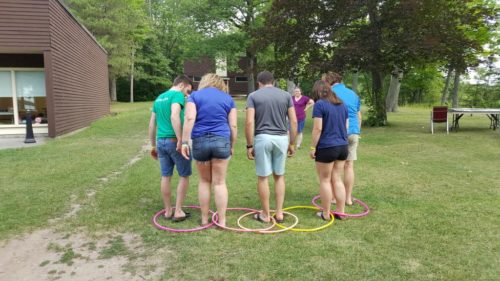Why are 4-H Ontario Volunteers required to complete these steps?
At 4-H Ontario, we feel that equipping our volunteers with comprehensive training and thorough screening process are the start of setting you up to succeed. We have a duty to ensure the safety of our youth, so our training begins with a vulnerable sector check as well as a robust training program to help recognize the importance of child safety.
Once the screening process is completed there are a variety of opportunities to learn about 4-H and your strengths and interests as a volunteer. We know that your time, and commitment to 4-H youth are something that creates a meaningful experience and we are here to support you in that goal every step of the way!
The purpose of 4-H volunteers is to help 4-H club members grow and reach their full potential by supporting them to be part of meaningful, educational experiences. Encourage members, parents, and other volunteers to actively participate in appropriate 4-H opportunities that lead youth to become successful, contributing members of society.
- Develop a caring relationship with members
- Become an advisor, guide, and mentor.
- Each 4-H member is a unique individual with unique needs. Take time to listen and consider the needs, interests and strengths of each member of your 4-H club.
- Create a safe environment for 4-H members
- Help youth feel welcome and safe from physical or emotional harm.
- Encourage participation and welcome the ideas of youth and parents.
- Ensure adequate supervision at all club functions.
- Provide opportunities for youth to build skills
- Help youth find resources to explore 4-H projects and activities further.
- Provide meaningful learning opportunities where youth can experience success and develop self-confidence.
- Model failure or frustration as part of the learning process.
- Be fair and consistent in enforcing guidelines and giving feedback.
- Create opportunities for youth to value and practice service to others
- Encourage youth to consider the feelings of others.
- Encourage youth to youth mentorship.
- Help youth build connections within their community.
- Allow youth to choose their service projects based on what is important to them and the needs of their community.
- Allow youth to make decisions and lead
- Provide opportunities for youth to have decision-making power. This can include:
- how the club functions and its activities
- creating a 4-H club activity calendar
- welcoming and orienting new 4-H members
- running meetings
- developing committees
- planning and conducting activities
- Provide opportunities for youth to have decision-making power. This can include:
- Create an inclusive environment
- 4-H clubs are open to all youth, regardless of race, religion, socio-economic status or sexual orientation.
- Age restrictions apply in some provinces but generally all youth between the ages of 6-25 are welcome to join a 4-H club.
- Welcome new 4-H members and share information with them and their families.
- Be open to new ideas and perspectives.
- Follow-up with 4-H members who miss meetings.
- Continually provide feedback to members. Give them advice and praise.
- Have 4-H members provide feedback to you. Ask members how you can help them even more than you are now.
- Keep up-to-date and engaged
- Read 4-H newsletters, provincial and national correspondence, and keep members and parents informed.
- Be aware of 4-H projects available, help members select projects, and encourage parents to support their child’s project work.
- Participate in all required volunteer trainings.
Qualifications/skills needed:
- Sincere interest in the safety and well-being of youth.
- Desire to facilitate and motivate youth while nurturing self-esteem, decision-making skills, responsibility, and leadership.
- Successfully pass the volunteer training process and a complete background check, including a Vulnerable Sector Screening.
- Ability to organize information and materials and delegate responsibility.
- Ability to work and communicate effectively both verbally and written.
- Desire to motivate parents and other volunteers.
- Interest in working in partnership with youth, other volunteers and professional staff in an educational setting.
- Willingness to adopt the philosophy, policies, and procedures of 4-H Canada and your provincial 4-H office.
Club involvement
You don’t have to be an expert in a project topic to be a leader! By following the project resources, learning along with your members and involving others, there is no limit to the variety of 4-H clubs or projects you can run!
Joining an existing club:
- 4-H clubs often encounter situations and times where a volunteer is needed to replace a previous club leader. Coming into an existing 4-H club is an excellent opportunity for new volunteer leaders to learn from their co-leader and youth members. Check with your local 4-H Association regarding opportunities to volunteer with an existing club in your area
Starting your own 4-H club:
- You may have just heard about 4-H and are interested in starting up a brand new 4-H club in your community. If there is no club in your area, your provincial office will help you create one!
- Something to consider if starting up a new 4-H club:
- If there is no 4-H club in your area, then this is your opportunity to get a group of interested youth together and brainstorm ideas for themes, activities and projects you would like to take on. Make sure you connect with your provincial 4-H office before setting up a club and selecting a project.
- 4-H clubs are led by a minimum of two leaders who work together to come up with activities, manage schedules and budgets, and support each other in the running of the club. 4-H youth play a key role in club operations as well, and should be involved in the running of their 4-H club.



